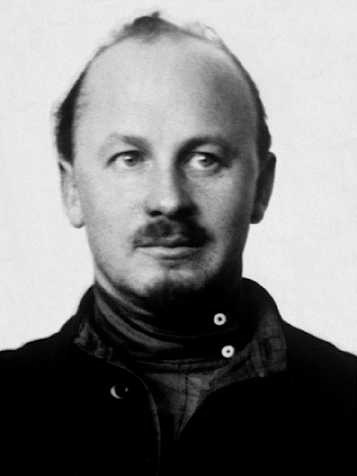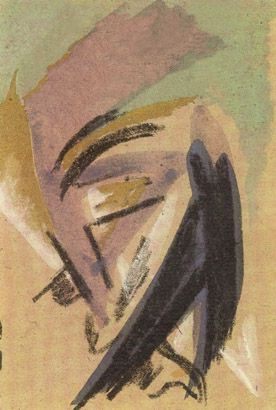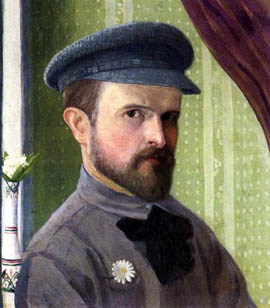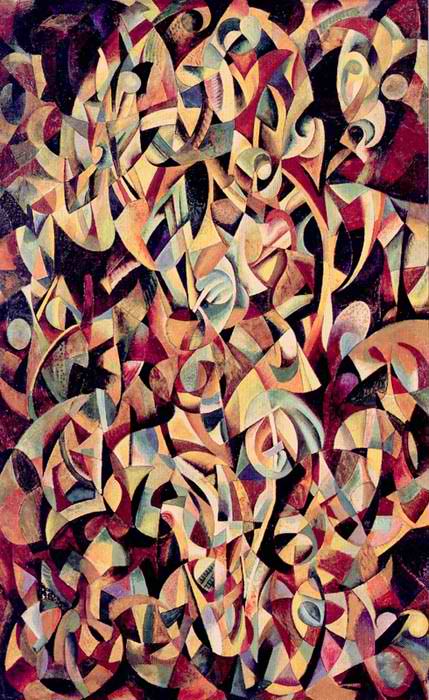|
Anarkhiia
''Anarkhiia'' was Russian weekly, then daily newspaper published by the Moscow Federation of Anarchist Groups. It was edited by Vladimir Barmash, Abba Gordin, German Askarov, Pyotr Arshinov, Lev Chernyi and others. It was first launched in September 1917, published from the headquarters of the MFAG in the " House of Anarchy," formerly the Chamber of Commerce, on Malaia Dimitrovka Street. ''Anarkhiia'' was suspended in the confusion arising over the Bolshevik seizure of power. It reappeared in March 1918 as a daily newspaper expressing anarchist fury over the Bolshevik acquiescence to German Imperialism in the Brest-Litovsk Treaty. Production was interrupted by the Cheka raid on the House of Anarchy, on 12 April 1918. However about a fortnight later it was relaunched from the temporary address of 1 Nastasinsky, previously the home of the Poets' Club in the basement. The last issue, the 99th, was published on 2 July 1918. Creativity Section From 1918 the paper had a section dev ... [...More Info...] [...Related Items...] OR: [Wikipedia] [Google] [Baidu] |
Abba Gordin
Abba Lvovich Gordin (1887–1964) was an Israeli anarchist and Yiddish writer and poet. Early life and career Abba Gordin was born in 1887 in Smorgon (now in Belarus) to Rabbi Yehuda Leib Gordin of Łomża and Khaye Ester Sore Gordin (née Miller). As a teenager, he organized a strike by apprentice tailors in Ostrów, disseminated radical propaganda in Kreslavka (Krāslava) and Dvinsk (Daugavpils), and was briefly imprisoned after taking part in the abortive revolution of 1905–1906, having led demonstrators to storm the jail and free political prisoners in Vilkomir. He and his brother Wolf (Ze'ev), who were at that time affiliated with the labor-Zionist youth movement Tseirei Tsion, broke from their father's religion after their mother's death in 1907. In 1908, Abba and Wolf Gordin opened a secular Hebrew school, "Ivria," where they experimented with a unique form of libertarian pedagogy. To teach a modern, secular Hebrew, they believed, required teaching methods th ... [...More Info...] [...Related Items...] OR: [Wikipedia] [Google] [Baidu] |
Aleksei Gan
Aleksei Mikhailovich Gan (Russian: Алексей Михайлович Ган; born Imberkh; 1887 or 1893 – 8 September, 1942) was a Russian anarchist and later Marxist avant-garde artist, art theorist and graphic designer. Gan was a key figure in the development of Constructivism after the Russian Revolution. Life Gan's involvement with creative activity began in 1917 when he became involved with the Moscow Union of Food Workers with whom he set up an amateur theatrical group. The group encompassed various political groupings and following the Bolshevik seizure of power, some joined the Red Army, others the Black Guards or affiliated to the Left Socialist-Revolutionaries. Gan reorganised the group as the Proletarian Theatre, which affiliated to the Moscow Federation of Anarchist Groups. Gan was the first to write on art in the anarchist newspaper ''Anarkhiia'' (Anarchy) when it introduced an art section in early 1918. In March 1921, Gan was one of the seven artists, in ... [...More Info...] [...Related Items...] OR: [Wikipedia] [Google] [Baidu] |
Nadezhda Udaltsova
Nadezhda Andreevna Udaltsova (, 29 December 1885 – 25 January 1961) was a Russian avant-garde artist (Cubist, Suprematist), painter and teacher. Early life and education Nadezhda Udaltsova was born in the village of Orel, Russia, on 29 December 1885. When she was six, her family moved to Moscow, where she graduated from high school and began her artistic career. In September 1905 Udaltsova enrolled in the art school run by Konstantin Yuon and Ivan Dudin, where she studied for two years and met fellow-students Vera Mukhina, Liubov Popova, and Aleksander Vesnin. In the spring of 1908 she traveled to Berlin and Dresden, and upon her return to Russia, she unsuccessfully applied for admission to the Moscow Institute of Painting, Sculpture, and Architecture. She also married Alexander Udaltsov, her first husband, in 1908. In 1910–11, Udaltsova studied at several private studios, among them Vladimir Tatlin's. In 1912–13 she and Popova traveled to Paris to continue their studie ... [...More Info...] [...Related Items...] OR: [Wikipedia] [Google] [Baidu] |
Lev Chernyi
Lev Chernyi ( rus, Лев Чёрный, p=ˈlʲef ˈtɕɵrnɨj, a=Lyev Chyornyy.ru.vorb.oga; born Pavel Dimitrievich Turchaninov, rus, Па́вел Дми́триевич Турчани́нов, p=ˈpavʲɪl ˈdmʲitrʲɪjɪvʲɪtɕ tʊrtɕɪˈnʲinəf; died September 21, 1921) was a Russian individualist anarchist theorist, activist and poet, and a leading figure of the Third Russian Revolution. In 1917, Chernyi was released from his political imprisonment by the Imperial Russian regime, and swiftly became one of the leading figures in Russian anarchism. After strongly denouncing the new Bolshevik government in various anarchist publications and joining several underground resistance movements, Chernyi was arrested by the Cheka on a charge of counterfeiting and in 1921 was executed without trial. Early life, philosophy and imprisonment Chernyi was born Pavel Dimitrievich Turchaninov to an army colonel father. A "déclassé intellectual" whom anarchist historian Paul Avrich c ... [...More Info...] [...Related Items...] OR: [Wikipedia] [Google] [Baidu] |
Moscow Federation Of Anarchist Groups
The Moscow Federation of Anarchist Groups (MFAG) was a network of anarchist groups established in Moscow in 1917. They occupied the Merchants' House shortly after the February Revolution. They published ''Anarkhiia'', weekly after its launch in September 1917 and then as a daily from March 1918. Following the October Revolution of November 1917, they were involved in the development of the Black Guards into a significant military force in Moscow. On 3 March 1918 the Bolsheviks signed the Brest-Litovsk Treaty, which precipitated a political crisis with their erstwhile allies amongst the Anarchists and Left Socialist Revolutionaries. On 12 April, 1918 the Bolshevik authorities moved against the Anarchists: 26 centres were raided in Moscow, forty anarchists were killed and over 500 were arrested. Lev Chernyi Lev Chernyi ( rus, Лев Чёрный, p=ˈlʲef ˈtɕɵrnɨj, a=Lyev Chyornyy.ru.vorb.oga; born Pavel Dimitrievich Turchaninov, rus, Па́вел Дми́триевич Т� ... [...More Info...] [...Related Items...] OR: [Wikipedia] [Google] [Baidu] |
German Askarov
German Karlovich Askarov (1882-1937?) was a anarchist Anarchism is a political philosophy and movement that is skeptical of all justifications for authority and seeks to abolish the institutions it claims maintain unnecessary coercion and hierarchy, typically including, though not neces ... from the Russian Empire. He was born Herman Iakobson into a Jewish family on 24 June 1882, probably in Lodz. Between 1907 and 1909 he wrote a series of articles for the émigré journal ''Anarkhist''. Here he distinguished between reformist trade unions which he felt were trying to reconcile the forces of labour and capital and the revolutionary syndicats who remained loyal to the goal of overcoming both the state and private property. He was arrested on 13 January 1935 and charged with anti-Soviet agitation. He was sentenced to five years of imprisonment in correctional labor camps "for counter-revolutionary agitation". References 1882 births 1937 deaths Anarcho-communi ... [...More Info...] [...Related Items...] OR: [Wikipedia] [Google] [Baidu] |
Olga Rozanova
Olga Vladimirovna Rozanova (also spelled Rosanova, Russian: Ольга Владимировна Розанова) (22 June 1886 – 7 November 1918, Moscow) was a Russian avant-garde artist painting in the styles of Suprematism, Neo-Primitivism, and Cubo-Futurism. Biography Early life Olga Rozanova was born in Melenki, a small town near Vladimir. Her father, Vladimir Rozanov, was a district police officer and her mother, Elizaveta Rozanova, was the daughter of an Orthodox priest. She was the family's fifth child; she had two sisters, Anna and Alevtina, and two brothers, Anatolii and Vladimir. Rozanova's father died in 1903, and her mother became the head of the household. She graduated from the Vladimir Women's Gymnasium in 1904. Due to her interest in the avant-garde movement, she moved to Moscow to study painting. Artistic career After arriving in Moscow, she attended the Bolshakov Art School, where she worked under Nikolai Ulyanov and sculptor Andrey Matveev. She aud ... [...More Info...] [...Related Items...] OR: [Wikipedia] [Google] [Baidu] |
Ivan Kliun
Ivan Vasilievich Kliun, or Klyun, born Klyunkov (Russian: Иван Васильевич Клюн; 1 September 1873, Bolshiye Gorky, Petushinsky District - 13 December 1943, Moscow) was a Russian Avant-Garde painter, sculptor and art theorist, associated with the Suprematist movement. Biography His father was a carpenter. In 1881, seeking to improve their economic condition, the family moved to Kyiv. In 1890, they moved again, to Russian Poland. He received his initial artistic education at the in Warsaw, in the 1890s, while working as an accountant. In 1898, he relocated to Moscow, where he frequented the studios of and Ilya Mashkov. His most important contact, however, came in 1907 when he met Kazimir Malevich and was introduced to the Russian Avant-Garde. This influenced him profoundly, although he joined the when it was created in 1910 and remained a member until 1916. He originally worked in the Symboloist style but, in 1913, due to the influence of Malevich, he began e ... [...More Info...] [...Related Items...] OR: [Wikipedia] [Google] [Baidu] |
Aleksei Morgunov
Aleksei Alekseevich Morgunov (russian: Алексей Алексеевич Моргунов; 21 October 1884, Moscow – 15 February 1935, Moscow) was a Russian Avant-Garde painter. His works were originally in the Neo-Primitivist style, but became influenced by Fauvism. Together with Kazimir Malevich and Ivan Kliun, he created a style known as "Februaryism". He later took up Neo-Classicism, then was forced to adopt the Socialist Realism model. Biography He is generally believed to have been the illegitimate son of the painter, Alexei Savrasov and, like him, suffered from alcoholism in his later years. His mother, Yekaterina, died in 1920.Shatskikh, Alexandra. ''Malevitch et l'association Supremus'', Trois carrés, 2009 His initial studies began at the Stroganov Moscow State Academy of Arts and Industry in 1899, but he also took private lessons from Konstantin Korovin and Sergey Ivanov. In 1904, he was accepted as a member of the and began to participate in their exhibitions. ... [...More Info...] [...Related Items...] OR: [Wikipedia] [Google] [Baidu] |
Aleksandr Rodchenko
Aleksander Mikhailovich Rodchenko (russian: link=no, Алекса́ндр Миха́йлович Ро́дченко; – 3 December 1956) was a Russian and Soviet artist, sculptor, photographer, and graphic designer. He was one of the founders of constructivism and Russian design; he was married to the artist Varvara Stepanova. Rodchenko was one of the most versatile constructivist and productivist artists to emerge after the Russian Revolution. He worked as a painter and graphic designer before turning to photomontage and photography. His photography was socially engaged, formally innovative, and opposed to a painterly aesthetic. Concerned with the need for analytical-documentary photo series, he often shot his subjects from odd angles—usually high above or down below—to shock the viewer and to postpone recognition. He wrote: "One has to take several different shots of a subject, from different points of view and in different situations, as if one examined it in the round ... [...More Info...] [...Related Items...] OR: [Wikipedia] [Google] [Baidu] |
Kazimir Malevich
Kazimir Severinovich Malevich ; german: Kasimir Malewitsch; pl, Kazimierz Malewicz; russian: Казими́р Севери́нович Мале́вич ; uk, Казимир Северинович Малевич, translit=Kazymyr Severynovych Malevych ., group=nb (Запись о рождении в метрической книге римско-католического костёла св. Александра в Киеве, 1879 год // ЦГИАК Украины, ф. 1268, оп. 1, д. 26, л. 13об—14. – 15 May 1935) was a ... [...More Info...] [...Related Items...] OR: [Wikipedia] [Google] [Baidu] |
Poets' Club
The Poets' Club was a group devoted to the discussion of poetry. It met in London in the early years of the twentieth century. It was founded by Henry Simpson, a banker. T. E. Hulme helped set up the group in 1908, and was its first secretary. Hulme wrote a charter document: "Rules 1908". The group comprised mainly amateurs and met once a month, excluding the summer months of July, August, and September, for dinner, the reading of poems, and the presentation of short (20 minute) papers on various topics relating to poetry. Around the end of 1908 Hulme read the Club his ''A Lecture on Modern Poetry.'' The Club produced several anthologies; the first two being — ''For Christmas MDCCCCVIII'' (January 1909) and ''The Book of the Poets' Club'' (December 1909). Two of Hulme's poems were included in the first, "Autumn" and "A City Sunset," and another two in the second. These are regarded as the first examples of Imagism. In 1909, Hulme began a side-project with F.S. Flin ... [...More Info...] [...Related Items...] OR: [Wikipedia] [Google] [Baidu] |

.jpg)




